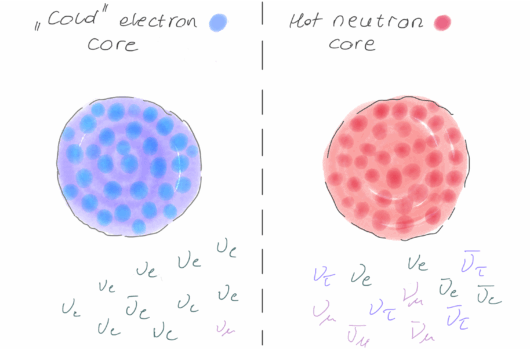Constraints on the maximum mass of neutron stars with a quark core from GW170817 and NICER PSR J0030+0451 data
Constraints on the maximum mass of neutron stars with a quark core from GW170817 and NICER PSR J0030+0451 data
View
Abstract
We perform a Bayesian analysis of the maximum mass ![]() of neutron stars with a quark core, incorporating the observational data from tidal deformability of the GW170817 binary neutron star merger as detected by LIGO/Virgo and the mass and radius of PSR J0030+0451 as detected by \nicer. The analysis is performed under the assumption that the hadron-quark phase transition is of first order, where the low-density hadronic matter described in a unified manner by the soft QMF or the stiff DD2 equation of state (EOS) transforms into a high-density phase of quark matter modeled by the generic “Constant-sound-speed” (CSS) parameterization. The mass distribution measured for the
of neutron stars with a quark core, incorporating the observational data from tidal deformability of the GW170817 binary neutron star merger as detected by LIGO/Virgo and the mass and radius of PSR J0030+0451 as detected by \nicer. The analysis is performed under the assumption that the hadron-quark phase transition is of first order, where the low-density hadronic matter described in a unified manner by the soft QMF or the stiff DD2 equation of state (EOS) transforms into a high-density phase of quark matter modeled by the generic “Constant-sound-speed” (CSS) parameterization. The mass distribution measured for the ![]() pulsar, MSP J0740+6620, is used as the lower limit on
pulsar, MSP J0740+6620, is used as the lower limit on ![]() . We find the most probable values of the hybrid star maximum mass are
. We find the most probable values of the hybrid star maximum mass are ![]() (
(![]() ) for QMF (DD2), with an absolute upper bound around
) for QMF (DD2), with an absolute upper bound around ![]() , to the 90% posterior credible level. Such results appear robust with respect to the uncertainties in the hadronic EOS. We also discuss astrophysical implications of this result, especially on the post-merger product of GW170817, short gamma-ray bursts, and other likely binary neutron star mergers.
, to the 90% posterior credible level. Such results appear robust with respect to the uncertainties in the hadronic EOS. We also discuss astrophysical implications of this result, especially on the post-merger product of GW170817, short gamma-ray bursts, and other likely binary neutron star mergers.




